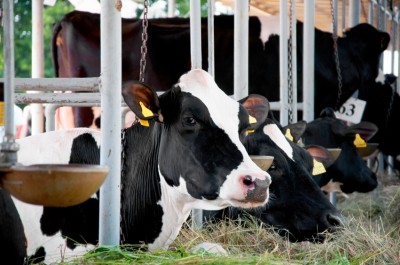Biomin mycotoxin survey: Risk for South America and Asia higher than in 2015

The Austrian company has just released its latest annual mycotoxin survey, the scope of which, it said, has expanded considerably compared to the previous year.
“You get more and more accurate with the higher numbers,” said Dr Timothy Jenkins, mycotoxin risk management product manager at Biomin.
| 2015 | 2016 |
Number of analyses | 31000 | 63630 |
Number of samples | 8271 | 16511 |
Countries | 75 | 81 |
Threshold levels
For the first time, he said, the survey conveyed risk levels in terms of the percentage of samples testing positive for at least one mycotoxin above the threshold levels: Afla; 2 ppb, ZEN; 50 ppb, DON; 150 ppb, T-2; 50 ppb, FUM; 500 ppb, OTA; 10 ppb
In Asia – the region where it noted mycotoxin risk was the highest in 2016— Biomin found the risk level was 80%, meaning that 8 in 10 samples had at least one mycotoxin above the threshold levels. The average worldwide risk level was 62% — meaning that nearly two-thirds of samples had at least one mycotoxin above the threshold levels, said the company.
Mycotoxins are a large and growing family of toxic fungal substances that can occur in various types of commodities intended for food and feed.
Biomin said the survey aims to give an overview on the incidence of aflatoxins (Afla), zearalenone (ZEN), deoxynivalenol (DON), fumonisins (FUM) T-2-toxin (T-2) and ochratoxin A (OTA) in the primary components used for feed which include corn, wheat, barley, rice, soybean meal, corn gluten meal, dried distillers grains (DDGS) and silage, among others.
Reduced risk in Africa, Middle East and Europe
However, some regions including Africa, the Middle East and some parts of Europe, showed a lower mycotoxin contamination risk that in previous years, Jenkins said.
He qualified that somewhat: “The survey, in terms of Europe, tracks the first half of the year, with overspill from the 2015 harvest where mycotoxin risk was reduced. It did not capture what was happening in the cereal harvest in Europe in the latter months of the year, where the risk level was up – thus, the overall picture for Europe in 2016 has not been recorded.”
The data accrued showed a higher level of mycotoxins in soybeans in Brazil, typically not a grain associated with a high mycotoxin load like corn. The ramifications of the heavy rainfall there on last year’s soybean crop is evident, said Jenkins. “We saw high levels of DON contamination in Brazil in 2015, but not to the same extent as this year."
In Asia, in South and East Asia in particular, he said, the survey also saw heightened risk due to the heavier than usual rainfall there as well.
Co-occurrence pattern
In terms of the rate of co-occurrence threat, he said the survey showed nearly two-thirds of samples contained two or more mycotoxins. In 2015, just slightly more than half of samples demonstrated co-occurrence. Multiple mycotoxin contamination of feed presents additional problems, as certain combinations of mycotoxins are known to have synergistic effects that aggravate the negative consequences for animals, said Biomin.
Concluding, Jenkins said feed manufacturers need to be a bit more cautious about monitoring mycotoxin levels in soybeans from South America in general, be aware that the levels of fumonisins in corn in North American are higher than usual, and they should also exercise caution in relation to cereals such as wheat, triticale, barley and oats from Europe.
The company is planning to do more regular reporting on mycotoxin risk globally, publishing data online including results from sample testing post-harvest to try and gauge upcoming risk: “We have been moving towards this for a while. But we are talking about data from large sampling pools, not 30 samples, for instance, which are not demonstrative of overall risk,” he added.








